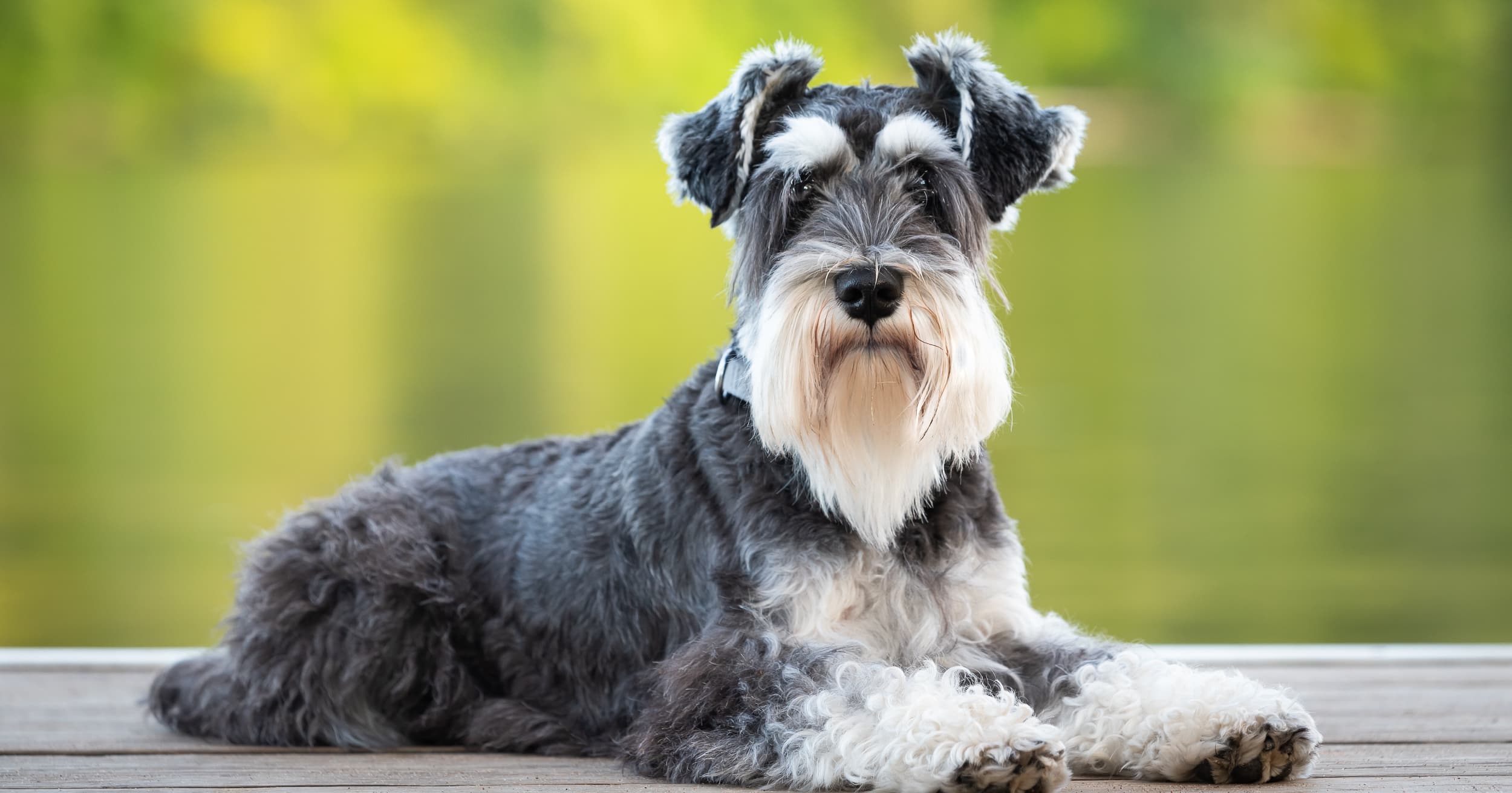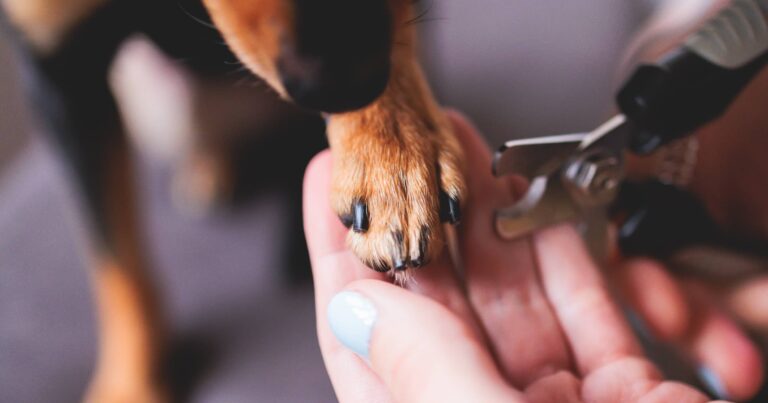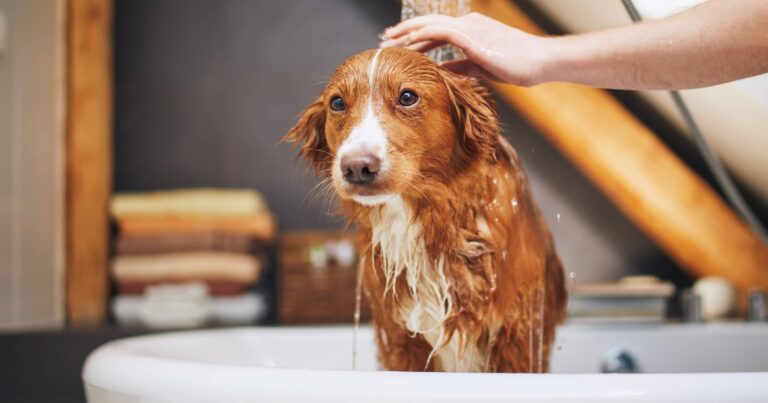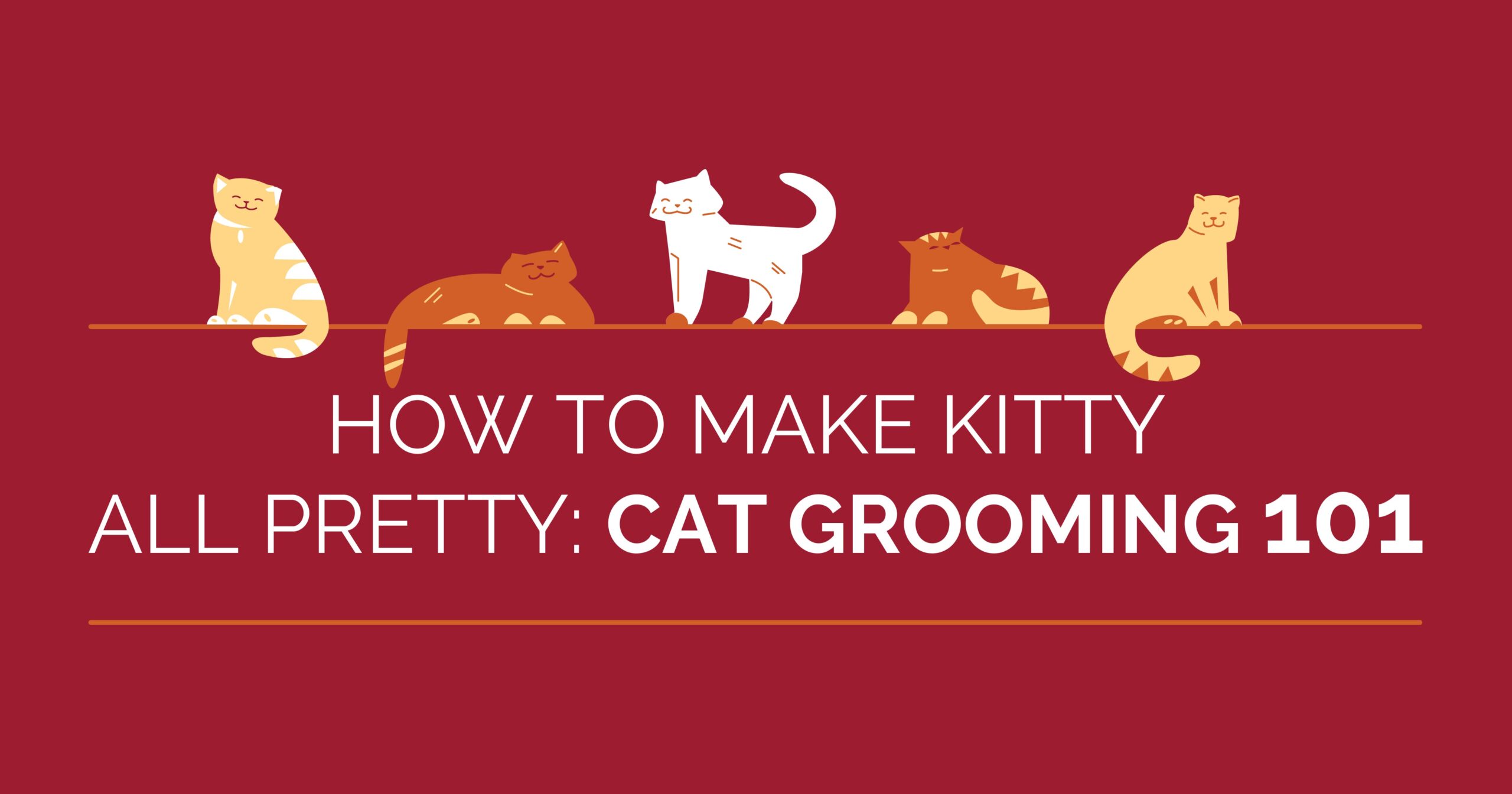If you’re looking for a new canine family member, “rarely sheds” might be an important box to tick in your search for a compatible pooch. Removing dog hair from the couch, carpet, sweaters, etc. (i.e., everything) can be an endless task and not something everyone wants (or has time) to do. To help you in your search (and reduce the chance of a fur‑tastrophe in your home), we have listed some of the dog breeds the AKC classifies as “infrequent shedders.” We’ve also got some important information for people allergic to dogs, because if you’re searching for a “100% hypoallergenic dog breed,” your search is in vain…
Why Do Some Breeds Shed Very Little?
Just like people, dogs shed their hair when it is damaged, loose or old. So almost all dogs are going to shed a little hair at some point (hairless dogs may be the exception). Breeds that don’t have a fur undercoat and dogs with wiry or curly hair typically shed less hair than dogs with double coats or straight hair. Dogs with a double coat typically shed their fur undercoat twice a year (depending on if they spend most of their time indoors or outdoors) and their topcoat once a year. Dogs that spend most of their time inside will usually shed a little bit all year.
The graphic below highlights some of the breeds that are considered to be infrequent shedders by the AKC. This is just a small selection — there are many more!
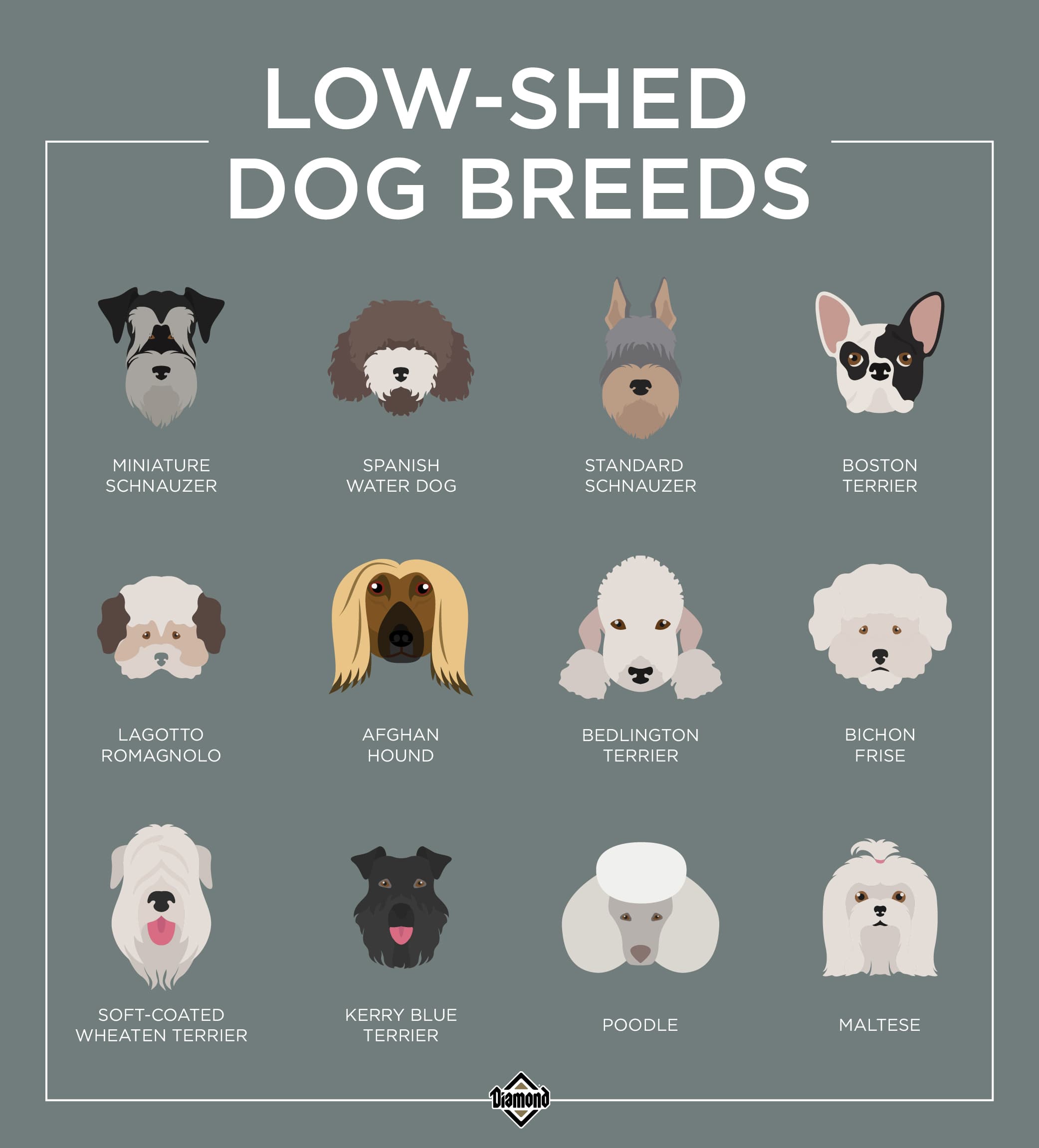
Low-Shed Doesn’t Always Mean Low-Maintenance
Some dogs on the low-shed list may not lose much hair, but they do require high-maintenance grooming (maybe even professional grooming) to keep their coats healthy and looking good. Frisé means “curly” in French, so it’s no surprise that bichon frisé dogs have a curly coat, and that they, like poodles, require high-maintenance grooming care. Miniature schnauzers have a double coat (a wiry outer layer with softer fur underneath) that also requires a lot of care. Other low-shed breeds like Afghan hound and Maltese need daily brushing, but their hair should be easy enough to manage that you can groom them yourself. Spanish water dogs don’t need brushing because their curly hair grows into cords (think dreadlocks), but they do require regular clipping to keep their cords looking good.
The 100% Hypoallergenic Breed Myth
Many low-shed breeds are also labeled “hypoallergenic” breeds, suggesting they are better for people who are allergic to dogs. However, there are no breeds that are 100% hypoallergenic (including hairless breeds), because the proteins that cause the allergy are found in the urine and saliva of dogs, as well as their dander (dead skin cells). Generally, low-shed breeds cause fewer reactions because allergens in the dander aren’t spread into the environment as much. But it is still possible to be allergic to a dog from a low-shed or hypoallergenic breed.
In one study, dogs from a hypoallergenic breed had more of the Can f 1 allergen (the main allergen affecting people) on their hair and coat than dogs from a traditional shedding breed. The amount of allergen also varied between individual dogs of the same breed, which means that it’s possible for someone exposed to two dogs of the same breed to develop allergy symptoms from exposure to one of the dogs and not the other.
If you’re looking to vacuum a little less often, then a low-shedding dog breed may be a good choice. You can also limit the fallout from a dog that sheds by grooming them often to remove their loose hair and ensuring optimal nutrition.
RELATED POST: Dog Grooming 101

